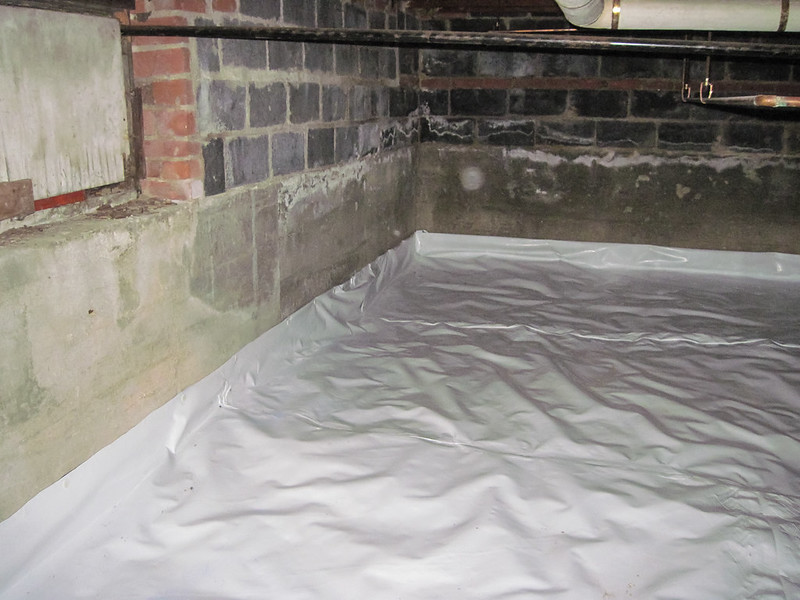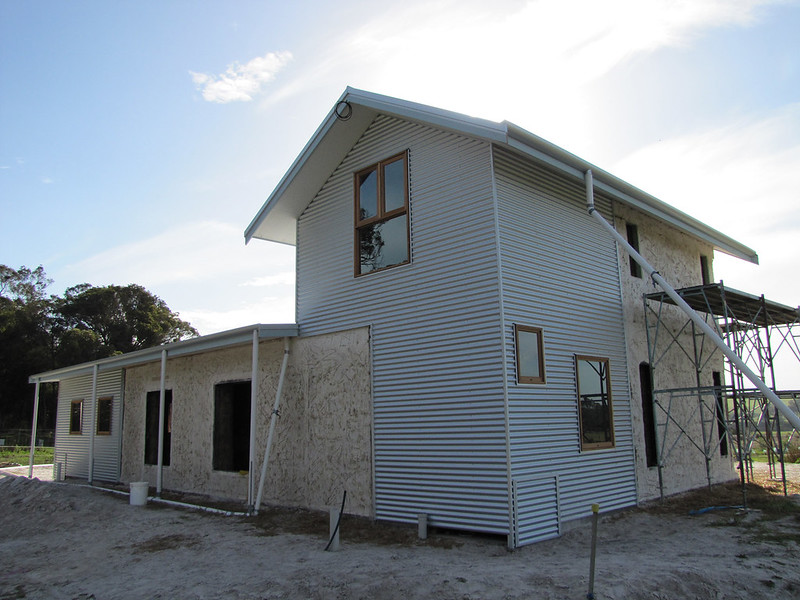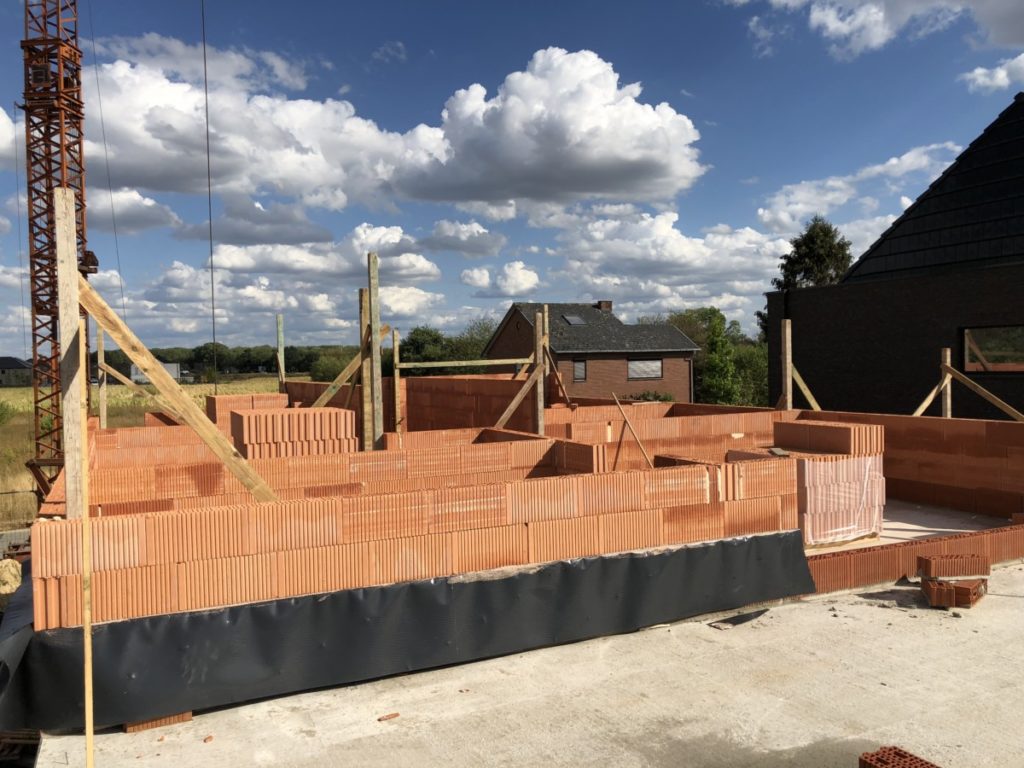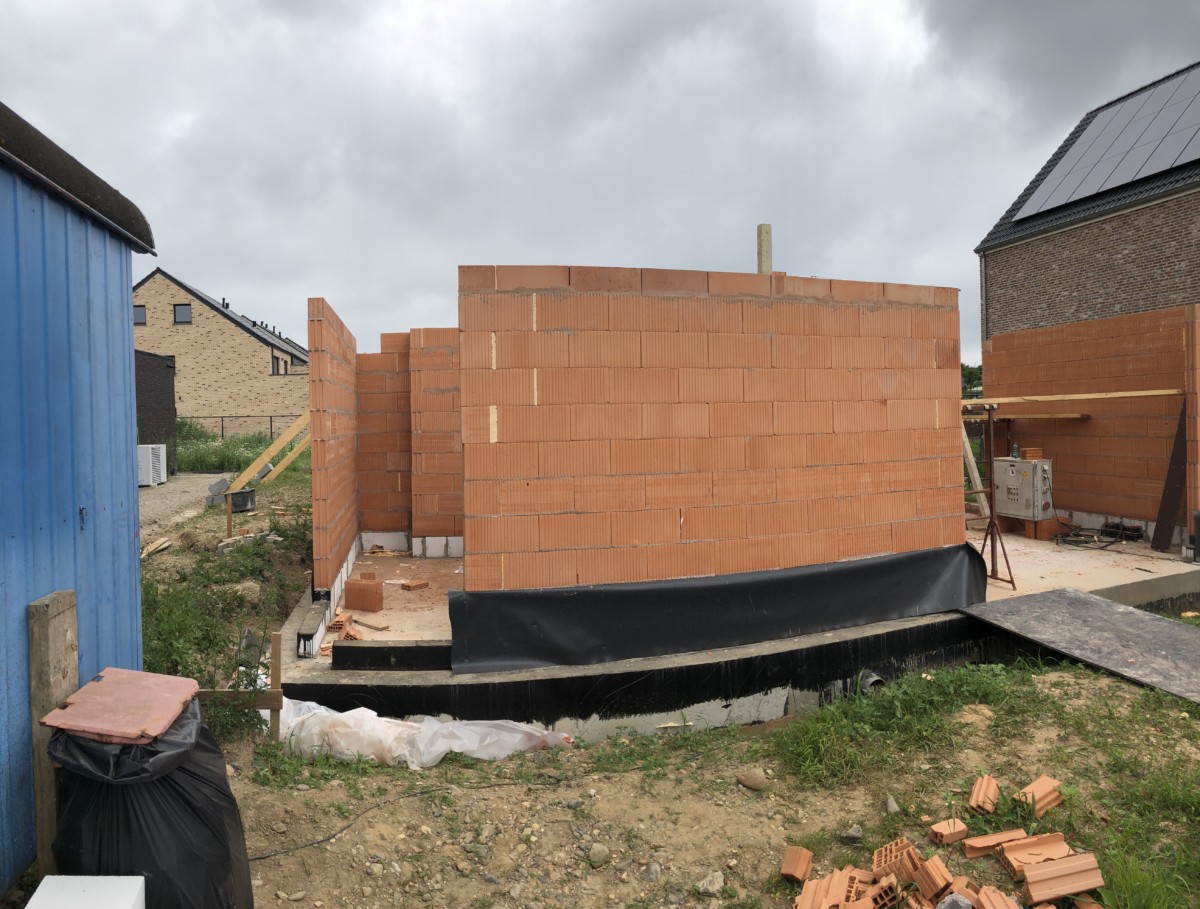If you are in the process of building your garage, you are likely curious as to whether the garage needs a vapor barrier or not. Here we will provide you with a guide to selecting the correct materials to prevent damage due to moisture entering the wall components of your garage.
Do you need a vapor barrier in your garage? In any garage, you will need to install some kind of a barrier to keep moisture from damaging the inner components of the walls. In colder climates, this barrier should be placed along the inside of the wall studs. In warmer, less temperate climates, this barrier should be placed beneath the cladding at the exterior of the building.
In this guide to selecting a proper vapor barrier for your garage, we will also provide specific details on the different types of vapor barriers and provide recommendations on which vapor barrier type best fits your needs.
Table of Contents
What Is A Vapor Barrier?

Vapor barriers are designed to prevent water vapor from migrating into a space that you are trying to keep damp air out of.
One of the most common materials used for vapor barriers is 6 mil polyethylene sheeting.
Such vapor barriers are often used in cold climates to prevent moisture from accumulating on the back side of the sheathing after traveling through the sheetrock and insulation, as is described here by the International Code Council (ICC). https://www.iccsafe.org/wp-content/uploads/proclamations/TN06-Vapor-Retarders_pdf.pdf
Moisture accumulated in this space due to the differences between indoor and outdoor air during the wintertime. The indoor air is warm and relatively humid while the outdoor air is cool and dry.
[googleadsycc adunit=”inarticle”]
Different Climate Zones Call For Different Building Practices
Your need for a vapor barrier in your garage will largely depend upon which climate zone you are located in.
The International Energy Conservation Code (IECC) includes a map of the U.S climate zones. The purpose of the map is to set performance for the building envelope, defined as the portion of the building separating the heated or cooled interior from the exterior.
Lower numbers(1-4) correspond to zones located in southern regions of the continental U.S. while higher numbers(5-7) correspond to northern regions.
In the most southerly zones (1,2 and 3) located in the deep southern states near and along the Gulf of Mexico, it is recommended that you do not place any type of a vapor barrier between the drywall and the exterior.
It can certainly be beneficial to use a housewrap like this one in the Deep South, but you should not be using a vapor barrier like polyethylene sheeting.
The farther north you go the more beneficial it is to use a vapor barrier such as 6 mil polyethylene sheeting, particularly in regions 6 and 7 corresponding to the northernmost states.
Cladding Type Determines Need For Vapor Barrier

Cladding is the material used in construction that you see on the outside of the building. It serves a purpose to help regulate the interior temperature and conditions of the building interior.
The type of cladding you choose for your structure will help determine your need for a vapor barrier.
Absorptive Materials
According to the U.S. Census Bureau, (https://www.iccsafe.org/wp-content/uploads/proclamations/TN06-Vapor-Retarders_pdf.pdf) the cladding on most homes and garages in the United States contain relatively absorptive materials such as:
- Brick
- Stucco
- Wood
- Fiber Cement
- Stone
These absorptive materials are known for retaining moisture within the wall components. Absorptive materials increase the necessity of a vapor barrier, particularly during winter months in colder climates.
[googleadsycc adunit=”inarticle”]
Vinyl Siding
Vinyl siding is less permeable to moisture than other types of cladding such as brick, stucco and wood.
Still, vinyl siding is not completely waterproof. Paul Fissette, the director of the Building Materials Technology And Management program at the University of Massachusetts has observed the issues with vinyl siding and moisture firsthand. Fissette recalls inspecting vinyl siding in freezing temperatures following a heavy sideways rain event. The vinyl siding had icicles protruding out from underneath the panels.
At a minimum, a house wrap such as DuPont Tyvek Homewrap should be placed beneath vinyl siding to prevent moisture from accumulating within wall components and leading to damage.
In Summary
If you are using more absorptive cladding materials such as brick, fiber cement and wood for the exterior of your garage, you will definitely want to use a less permeable vapor barrier such as TRM Manufacturing 610B Weatherall 6 mil Polyethylene Sheeting.
This is particularly the case if you are in a region susceptible to cold temperatures during wintertime.
If you are using vinyl siding, which holds a reputation for being less absorptive than the other cladding materials discussed here, you will still need to install a quality house wrap beneath the siding panels. This will help keep moisture from accumulating within the wall components of your garage.
Vapor Barriers Have Been Separated Into Classes
The International Code Council (ICC) has helpfully separated out the various types of vapor barriers into distinct classes.
Here is how they are broken down:
- Class I: these are often referred to as either vapor barriers or vapor impermeable materials
- Class one barriers such as polyethylene sheeting can trap moisture migrating through the wall components during wintertime.
- Class II: These types of vapor barriers are more permeable than Class I vapor barriers and are best suited for normal conditions.
- Asphalt-coated Kraft paper is an example of a Class II barrier
- Class III: Latex or enamel paint over drywall can act as a vapor barrier during the heating season, albeit with greater permeability than Class I and Class II vapor barriers
- Smart Vapor Barriers: proprietary smart vapor barriers alter their perm rating depending upon relative humidity conditions
- Perm ratings go up from 1 or less perms(equivalent to Class II permeability ratings) during drier conditions to 35 perms during humid conditions.
- One popular smart vapor barrier is the CertainTeed Smart Vapor Retarder
Where Are Vapor Barriers Supposed To Be Put?

Placing the vapor barrier in the incorrect location along the wall of your garage will defeat the purpose. Incorrect vapor barrier choice or placement may lead to the trapping of moisture within the wall components that you are trying to keep moisture out of, according to the Building Science Corporation.
The proper location of a vapor barrier depends on climate:
- Cold climates: In regions that get cold during the winter months, the vapor barrier should be placed along the inside face of the wall studs
- Warm climates: in regions that are warm and humid all year round, the vapor barrier should be put along the exterior of the home beneath the claddings.
Is There A Difference Between Vapor Barriers And Vapor Retarder?
Although they both keep moisture from infiltrating the inner components of a wall, there is a difference between vapor barriers and vapor retarders.
The difference between vapor barriers and vapor retarders lies in their permeability.
According to the Building Science Corporation, a vapor barrier is a layer with a permanence rating of 0.1 perms or less.
A perm is a score assigned to a layer that is centered on permeance and permeability. Lower perm ratings mean that moisture is met with more resistance.
Vapor retarders are the equivalents of Class II Vapor Barriers on the International Code Council (ICC).
Vapor retarders often come in the form of housewraps and asphalt-coated kraft paper while vapor barriers are more selective materials such as 6 mil polyethylene sheeting.



0 Comments